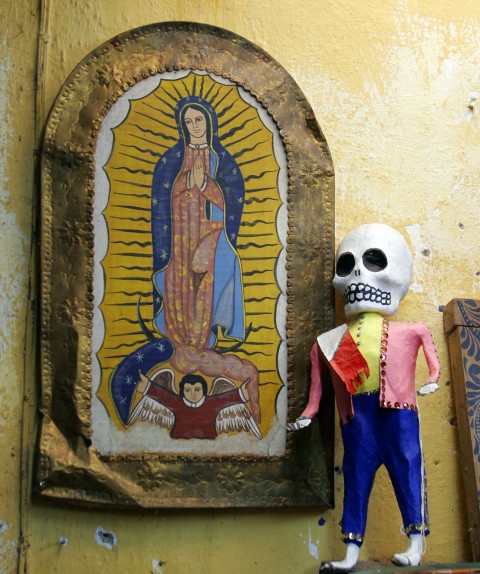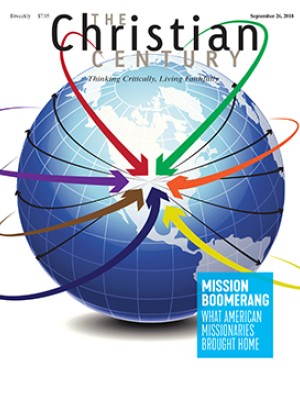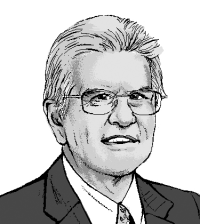Catholic, Aztec Mexico
In the 500 years since Catholicism came to Mexico, it has profoundly shaped and been shaped by the indigenous culture.

One of the most significant and troubling anniversaries in the history of Christianity is approaching. February 2019 marks the quincentennial of the arrival of Hernán Cortés in the land of Mexico, an event that led to savage warfare and brutal exploitation but also ultimately to a historic global expansion of the Christian faith. Both conquest and conversion have left indelible marks.
That religious epic involves the best and worst elements of the Christian story. In the beginning, mass conversions were enforced, in part as a political justification for plunder, enslavement, and the founding of empire. Yet over time native subjects absorbed and appropriated the faith, reinterpreting it on their own terms and making it an indispensable part of Mexican culture. Today Mexico is one of the world’s most populous Christian nations, with over 100 million Catholics and perhaps 10 million Protestants of various shades. After long conflicts and multiple disasters, the country’s Catholic Church remains a vast and powerful institution.
Read our latest issue or browse back issues.
The story of that church is one of radical breaks with the past and startling continuities. One eloquent symbol is the mighty cathedral of Mexico City itself, which stands in the main square, the Zócalo, which was also the political and religious center of ancient Aztec Tenochtitlán. That cathedral is adjacent to the old Templo Mayor, the pivot of Aztec ritual life, and it was constructed from the stones of the dismantled temple. Such a physical continuity appears in many Mexican cities and towns. Most of the great religious sites of Catholic Mexico are those of the Aztec world, and their role as centers of pilgrimage and ritual celebration reproduces that of pre-Christian times.
Nowhere is the evidence for continuity more visually stunning than in the city of Cholula, in Puebla. As in Aztec times, the city is divided into 18 neighborhoods or barrios, each with its own traditions and ritual life and its own place in the cycle of feasts and celebrations. The ritual life today is thoroughly Catholic in form, but it closely reproduces Aztec practice. Cholula also offers the sanctuary church of Our Lady of Remedies, dating from the 1570s, with an exalted position on the summit of what at first glance looks like an imposing hill. The church stands not on a hill but on the Tlachihualtepetl pyramid, the largest known example of its kind in the Americas. A pilgrim church standing proudly on an Aztec pyramid: a fine epitome of Mexican Christianity.
You could quite feasibly undertake a tour—even a pilgrimage—to multiple sites of worship, each of which would prompt reflection on the ways the newer faith was built and evolved in connection with the older one. Repeatedly, we would see the figure of the Virgin as critical to the process of exchange and acceptance.
The climax of such an exploration would be the country’s greatest shrine of Guadalupe, the site of the Virgin’s appearance to a native man in 1531. The place was previously sacred to the Aztec goddess Tonantzin, from whom Mary took some attributes. The Virgin of Guadalupe also acquired the darker skin color of her devout followers, making her la morena, the brown woman. Her appeal remains undimmed as a national symbol par excellence and, since 1999, Patroness of all the Americas. This year Andrés Manuel López Obrador won Mexico’s presidency in a stunning victory for his insurgent party, the National Regeneration Movement. It did not hurt him in the slightest when ballots across the country printed the acronym for that group: MORENA. How could anyone dare vote against that—against Her?
Understanding the conquest of Mexico can reshape our sense of Europe’s religious past. In visiting many cathedrals and churches in Catholic Spain or Italy, we may remember that the gold and silver from which so many Renaissance treasures were made was imported from the New World. Perhaps it came from Aztec ritual objects that were plundered, melted down, and repurposed. We might also consider the monstrances that Catholic churches around the world use to display or parade the sacred Host. Although such vessels long predate the conquest of Mexico, only after 1520 did European churches adopt the sunburst form that has since become customary. European Catholics were drawing precisely from Aztec precedent and the worship of the sun.
The conversion of Mexico and of the rest of the New World makes us think at length about how the faith has grown and spread worldwide, about the role of compulsion and conquest, about greed and empire. But we should never see that encounter solely in terms of victors and victims. The conquered, the indigenous people, took that triumphalist Christianity and restored it to a faith for the oppressed. Through the centuries, the models they created have spread worldwide, and migrations in modern times continue the process.
A version of this article appears in the print edition under the title “Conquest and conversion.”







